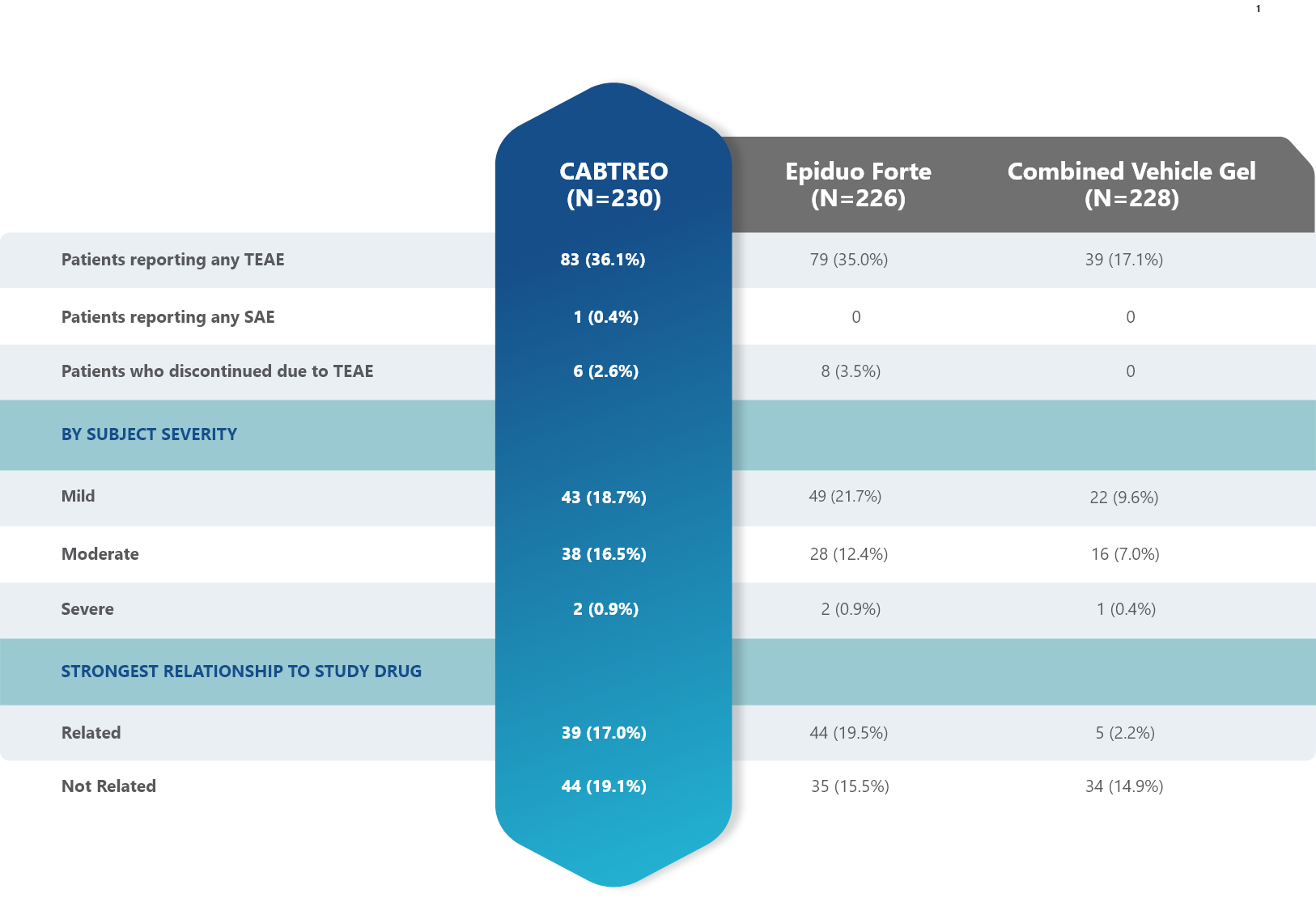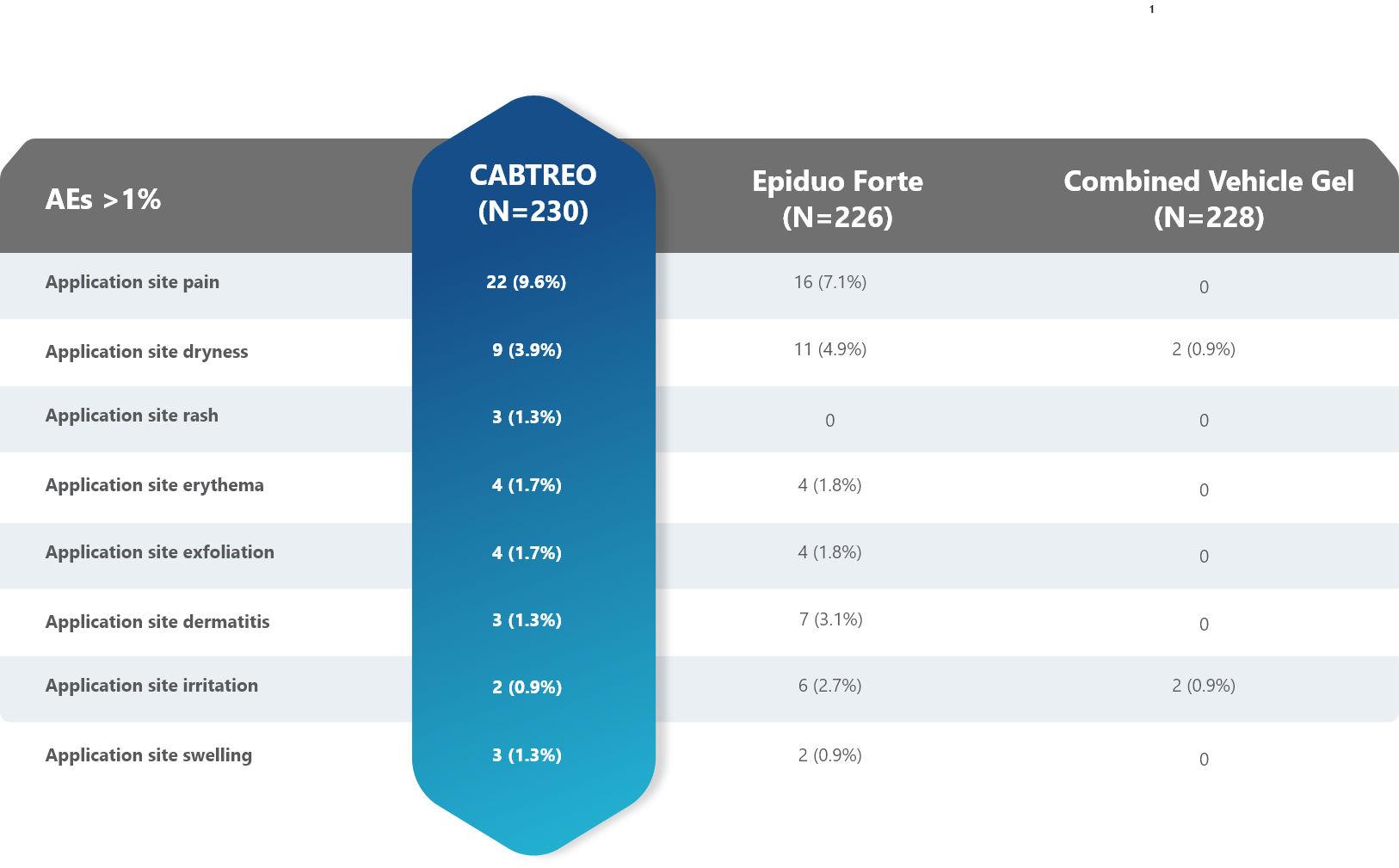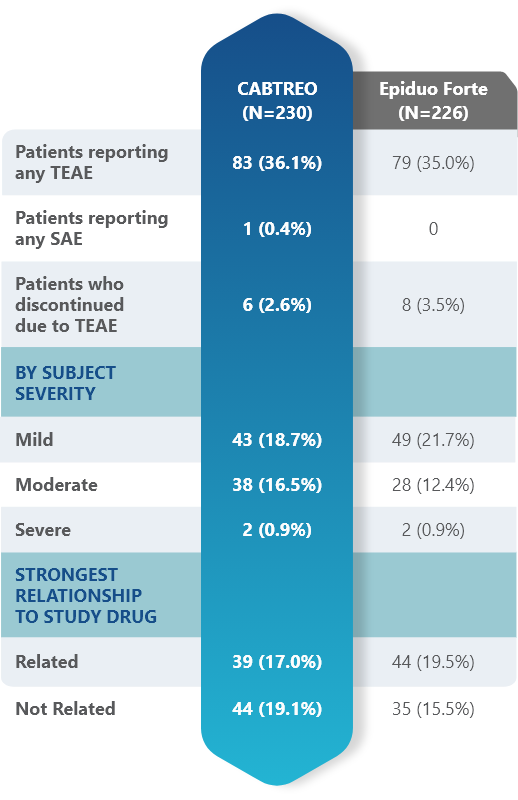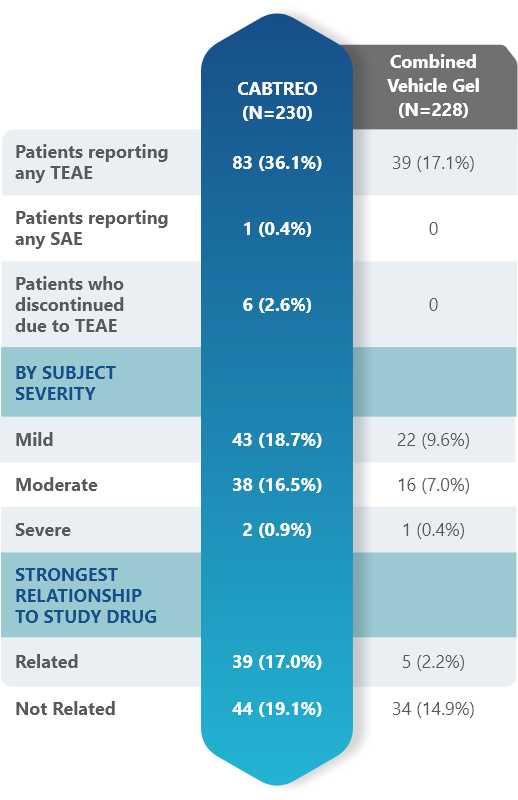Additional data:
PHASE 2 STUDY
OF CABTREO
VS EPIDUO FORTE
Additional data: Demonstrated tolerability of CABTREO from Phase 2 head-to-head study1
Most adverse events (AEs) with CABTREO were mild to moderate
- AEs were similar between CABTREO and Epiduo Forte1
- One serious adverse event (road traffic incident) in the CABTREO group1
- The majority of related AEs were application site reactions1



Treatment-emergent adverse events (TEAEs)
in patients who received CABTREO
- The most common TEAEs were application site pain and dryness1
Treatment-Emergent Related Adverse Events through Week 12


- The safety and efficacy of once-daily CABTREO were assessed in a Phase 2 double-blind multicenter, randomized, 12-week study of 741 subjects ≥9 years of age and older with facial acne vulgaris3
- Subjects were equally randomized to once-daily CABTREO, vehicle, or 1 of 3 component dyad gels: BPO 3.1%/adapalene 0.15%; clindamycin phosphate 1.2%/BPO 3.1%; or clindamycin phosphate 1.2%/adapalene 0.15%3
- Enrolled subjects had a score of moderate (3) or severe (4) on the Evaluator’s Global Severity Score (EGSS), 30 to 100 inflammatory lesions (papules, pustules, and nodules), 35 to 150 noninflammatory lesions (open and closed comedones) and two or fewer nodules3
- The coprimary efficacy endpoints of success on the EGSS, absolute change in noninflammatory lesion count, and absolute change in inflammatory lesion count were assessed at Week 12. Treatment-emergent adverse events and cutaneous safety/tolerability were also assessed3
- The safety and efficacy of once-daily CABTREO were assessed in a Phase 2 double-blind multicenter, randomized, 12-week study of 741 subjects ≥9 years of age and older with facial acne vulgaris3
- Subjects were equally randomized to once-daily CABTREO, vehicle, or 1 of 3 component dyad gels: BPO 3.1%/adapalene 0.15%; clindamycin phosphate 1.2%/BPO 3.1%; or clindamycin phosphate 1.2%/adapalene 0.15%3
- Enrolled subjects had a score of moderate (3) or severe (4) on the Evaluator’s Global Severity Score (EGSS), 30 to 100 inflammatory lesions (papules, pustules, and nodules), 35 to 150 noninflammatory lesions (open and closed comedones) and two or fewer nodules3
- The coprimary efficacy endpoints of success on the EGSS, absolute change in noninflammatory lesion count, and absolute change in inflammatory lesion count were assessed at Week 12. Treatment-emergent adverse events and cutaneous safety/tolerability were also assessed3
See More
Important Safety Information AND INDICATION
CONTRAINDICATIONS
CABTREO is contraindicated in patients with:
- known hypersensitivity to clindamycin, adapalene, benzoyl peroxide, any components of the formulation, or lincomycin.
- history of regional enteritis, ulcerative colitis, or antibiotic-associated colitis.
References: 1. Stein Gold L, Baldwin H, Kircik LH, et al. Efficacy and safety of a fixed-dose clindamycin phosphate 1.2%, benzoyl peroxide 3.1%, and adapalene 0.15% gel for moderate-to-severe acne: a randomized phase II study of the first triple-combination drug. Amer J Clin Dermatol. 2022;23(1):93-104. 2. Ortho Dermatologics. Data on file. 3. CABTREO (clindamycin phosphate, adapalene and benzoyl peroxide) Topical Gel 1.2%/0.15%/3.1% [prescribing information]. Bridgewater, NJ. Bausch Health US, LLC.

